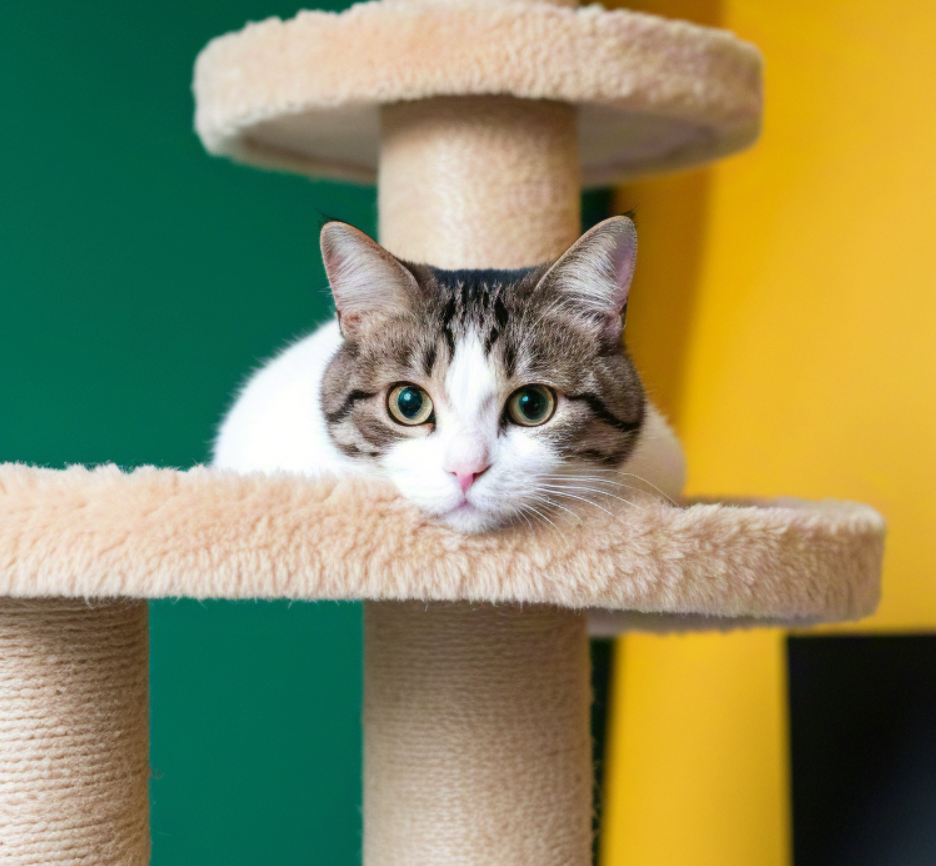
1. Observe Body Language:
The Secret Code of Your Cat’s Posture
● Tail Position:
○ Tail held high and gently swaying: Indicates the cat is excited, curious, or friendly.
○ Tail low and gently twitching: Often signals that the cat is anxious, nervous, or preparing to attack.
○ Tail tightly wrapped around its body: Sign of high tension or fear.
○ Tail slapping the ground rapidly: A clear sign that the cat is extremely annoyed or angry.
● Ear Position:
○ Ears pointing forward: The cat is focused, alert, or curious.
○ Slightly tilted backward: This suggests the cat is feeling relaxed or is enjoying the situation.
○ Ears flattened: A sign that the cat is afraid, frightened, or extremely submissive.
● Body Posture:
○ Relaxed, lying down with legs stretched out: The cat feels comfortable and secure.
○ Body tense, tail stiff: The cat is preparing to defend itself or attack.
○ Curled up in a ball: Indicates the cat is either cold, fearful, or simply resting.
2. Analyze Facial Expressions: The Art of Cat Micro-Expressions
● Slow Blinking: A cat’s slow blink is a sign of trust and friendliness, much like a human smile.
○ Dilated Pupils: Indicates excitement, curiosity, or fear.
○ Staring: A fixed stare often means the cat is assessing or challenging someone.
● Mouth and Whiskers:
○ Mouth slightly open with a bit of tongue showing: Indicates the cat is relaxed or enjoying a particular sensation.
○ Whiskers extended forward: Shows the cat is concentrating, possibly exploring or hunting.
○ Purring: A cat’s purr typically signals satisfaction, relaxation, or a request for comfort.
3. Pay Attention to Sounds and Behaviors: The Language of Cats
● Soft "Meow": The cat is seeking attention, food, or playtime.
○ Loud, continuous yowling: Usually signifies that the cat is scared, in pain, or needs urgent help.
○ Low growls or hissing: Signals that the cat is warning you or preparing to attack.
● Breathing and Heart Rate:
○ Rapid breathing or quickened heart rate: Indicates the cat is anxious, excited, or in pain.
○ Calm, steady breathing: Sign of relaxation and comfort.
● Other Behaviors:
○ Rubbing against objects: The cat is marking its territory, expressing affection, or seeking attention.
○ Grooming: Cats lick themselves to self-clean, but it can also be a stress-relieving behavior.
○ Hiding or avoiding: Suggests that the cat feels fearful, anxious, or is trying to escape an unpleasant situation.
4. Holistic Approach: Putting It All Together
Judging a cat’s emotions requires considering a combination of its body language, facial expressions, sounds, and behaviors. Once you identify your cat's emotional state, you can take appropriate actions. For example, if your cat is scared, provide it with a safe space and offer gentle comfort. For an excited cat, engage in playtime or activities that allow it to expend energy.
Additionally, regularly interacting with your cat helps build a deeper understanding and trust, making it easier to read its emotions accurately. If your cat’s emotional state seems persistent or worsens, consider consulting a professional animal behaviorist or veterinarian for intervention.
Conclusion:
By carefully observing your cat’s body language, facial expressions, sounds, and behaviors, you can better understand its emotional state and create a more comfortable environment for it. This not only promotes your cat's well-being but also strengthens the bond between you and your feline friend. Through love and patience, let’s unlock the emotional world of our cats and create more beautiful memories together.